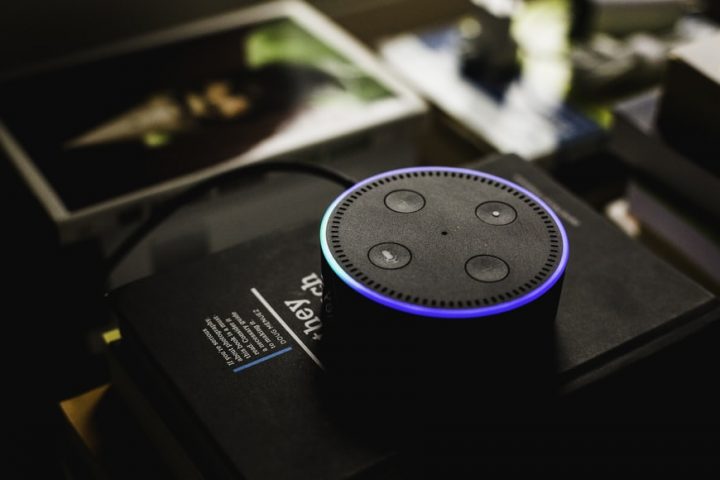Are you looking for ways to improve your website’s user experience? Wouldn’t it be great if you could engage website visitors by retaining their attention? Do you want to skyrocket your website’s conversion rates?
If your answer to any of these questions is an emphatic ‘yes”, it’s high time you consider revamping your website for voice search.
Typically, voice search optimization brings to mind established SEO tactics, such as keyword research and content creation. But making your website voice search-friendly takes more than that.
The layout, design, and architecture of your website play an equally important role in delivering a seamless experience for visitors using voice-enabled devices. That’s why it is crucial to work with an experienced website development company or in-house web designer that understands the needs and preferences of these visitors.
To make your website voice search-friendly, you need to include audio in your website. By incorporating voice-optimized content, voice search-friendly navigation, and responsive design, you can enhance user interactions and ensure your site is well-prepared for the growing trend of voice-driven online searches.
In this blog, we’ll discuss a few useful web design tips to optimize your website for voice search. Let’s get started.
Why Voice Search Deserves Your Attention
If you’re wondering whether optimizing your website for voice search is worth the effort, here’s an eye-opening statistic for you – more than 40% of internet users in the U.S. rely on voice assistants. That’s a whopping one-third of the total U.S. population.
Also, the worldwide intelligent virtual assistant market is projected to be worth $51.9 billion by 2028, growing at a CAGR of nearly 30%.
While the popularity of virtual assistants and voice-enabled devices had been on the rise, the COVID-19 pandemic has further skyrocketed their use. As consumers become more dependent on the internet to fulfill all their informational needs, they’ll further accelerate the adoption of voice search.
Irrespective of the niche and purpose of your website, chances are your target audience is already using virtual assistants to find relevant information and make purchases on the internet. Whether you’re using your website to showcase company information, generate leads, or drive sales, voice search-friendly design is crucial for achieving your goals.
Designing for Voice Search: A Closer Look
The concept of voice search optimization is typically associated with improving your website’s search engine rankings. You want your website to show up in search engine results pages (SERPs) for relevant voice search queries.
But what happens after a user clicks on your website’s URL from search engine results? If the user experience isn’t tailored to the needs of these users, chances are they’ll exit without taking any action.
It’s important to work with a website development company to effectively engage and convert these visitors.
1. Mobile-First Design
Virtual assistant users will access your website from their smartphones or tablets. If your website isn’t responsive, it’ll fail to deliver a great user experience on these devices. That’s why it is crucial to use mobile-friendly design practices.
Start by using a responsive theme that scales the dimensions of your website according to the screen size. Also, judiciously utilize white space and large fonts to ensure that your website’s content is easily readable on small screens.
If you’re using popups on your website, make sure they don’t block the content on mobile devices. Also, use large buttons for calls-to-action (CTAs) and menu items so that visitors can easily tap on them when using touch screens.
2. Speed Optimization
Website speed is one of the most important aspects of user experience. Nothing turns away visitors faster than a sluggish web page. It’s all the more crucial when your website visitors are using voice-enabled devices.
It’s because they’re most likely using virtual assistants while performing other activities, such as driving, cooking, exercising, etc.
If you want to engage these visitors, your website should load at lightning-fast speeds. Start by using Google’s PageSpeed Insights tool to identify potential threats to website speed. Also, avoid adding large images and video files to your website.
If you’re uploading media on your website, make sure you compress and optimize the file. You can also use other techniques, such as lazy loading and browser caching, to enhance website speed.
3. Content Accessibility
Publishing great content on your website would be futile if virtual assistant users struggle to find relevant information. Make sure it doesn’t take website visitors more than a couple of clicks to locate the content they came looking for.
Start by simplifying the site architecture to make your website easily navigable. Use simple and descriptive menus to help visitors find relevant content.
Also, it’s a good idea to add a search bar to your website. Consult your web development agency to implement voice-enabled search features on your website as well.
In Conclusion
As consumers gravitate towards virtual assistants, business owners and marketers will have to brainstorm ways to make their websites voice search-friendly. Work on enhancing your website’s speed and mobile responsiveness. Also, implement simple navigation and advanced search functionalities to make your content readily accessible.
